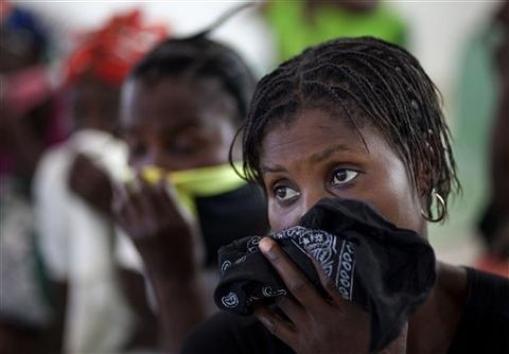
LONDON — Panic over radiation leaks at Japan’s earthquake-damaged nuclear plant may be diverting attention from potentially worse threats to public health from a tsunami, like the cold and disrupted supplies of water.
Experts said efforts in Japan should focus on ensuring safe drinking water and the disposal of sewage to prevent outbreaks of killer diseases such as typhoid and cholera, although the likelihood of any such epidemic was remote so far.
“People are getting so concerned about what are at the moment pretty low levels of radiation as far as the general public is concerned. but the real problems … are in dealing with the earthquake and the tsunami,” said Dr Richard Wakeford of Britain’s University of Manchester.
“If this was a developing country, we’d have people going down in their hundreds and thousands with the likes of typhoid and cholera by now. The questions should be: where is the sewage going? What is the state of the drinking water? if I were a public health official, that would be my principle concern.”
Japan was hit by a massive earthquake on Friday that triggered a tsunami along its northeastern coast, leaving about 850,000 households without electricity and 1.5 million households without running water. more than 440,000 people have been evacuated from their homes, Japanese media said.
But it is the radiation emerging from the Fukushima nuclear plant in northern Japan that has preyed on people’s minds, playing on fears of something that cannot be seen, touched and is poorly understood.
Experts say these fears could leave a lasting legacy.
Nick Pidgeon, a professor of public understanding of risk at Britain’s Cardiff University, said nuclear radiation has several particular factors that make people uniquely and disproportionately afraid of it:
It’s invisible, it’s insidious, its effects are often very difficult to isolate and remain unclear many decades later, and its main risk — cancer — is itself a highly-dreaded disease.
“When you get all of those things together, it’s almost a perfect storm of fear factors,” he told Reuters.
This leads to what is known as the “social amplification of risk”, he added. “And if people believe a risk to be real — then it becomes real in its consequences.”
How much radiation is dangerous?
-
Radiation is measured using the unit sievert, which quantifies the amount of radiation absorbed by human tissues. One sievert is 1,000 millisieverts (mSv).
In the U.S., the average person is exposed to about 6.2 millisieverts a year, mostly from background radiation and medical tests.
Some facts about radiation exposure:
- A person would need to be exposed to at least 100 mSv a year to have an increase in cancer risk. Exposure to 1,000 mSv during a year would probably cause a fatal cancer many years later in five out of every 100 people.
- Total body CT scan: about 10 mSv.
- Mammogram: about 0.7 mSv.
- CT colonography: about 5 to 8 mSv.
- CT heart scan: about 12 mSv.
- Typical chest X-ray: about 0.02 mSv
- Dental X-ray: 0.01 mSv.
- Coast-to-coast airplane flight: about .03 mSv. Airline crews flying the new York-Tokyo polar route are exposed to 9 mSv a year.
Sources: Reuters; new England Journal of Medicine; American Cancer Society; World Nuclear Association and Taiwan’s Atomic Energy Council
Studies of previous nuclear accidents have found the psychological impact of anxiety about radiation, and the rush to try to get away from it, is very real — even if the actual health risks from radiation exposure are limited.
‘A key risk at present is public panic’ Experts on the perception of risk, and others who have spent years studying the aftermath of the 1986 Chernobyl reactor disaster say there is good reason for this.
“A key risk at present is public panic in response to this incident,” said Professor Jim Smith, a specialist in earth and environmental sciences at Britain’s Portsmouth University. He was speaking from Chernobyl where he has studied the effects of radiation for more than 20 years.
“Experience from past nuclear incidents has shown that the stress and panic caused by these events can be as bad as, or worse than, the direct threat from radiation.”
One U.N. study said Chernobyl may eventually cause up to 9,000 deaths, mainly from extra cancers near the plant. Smith and others also point to repeated studies that have found that people exposed to the fallout from Chernobyl had anxiety levels that were twice as high as people unaffected by the accident.
A 2006 United Nations report found that those exposed to radiation were also three to four more likely “to report multiple unexplained physical symptoms and subjective poor health than were unaffected control groups”.
Smith puts the additional risk of fatal cancer for those working around Chernobyl during the cleanup at around 1.0 percent over a lifetime, and compares it with the added cancer risk posed by passive smoking or bad air pollution in cities.
“And that is Chernobyl,” he said. “From what I understand, we’re not in that kind of sphere or anywhere near it in Japan at this stage.”
Copyright 2011 Thomson Reuters. Click for restrictions.